hydrotherapy exercises for knee replacement pdf
- by stephany
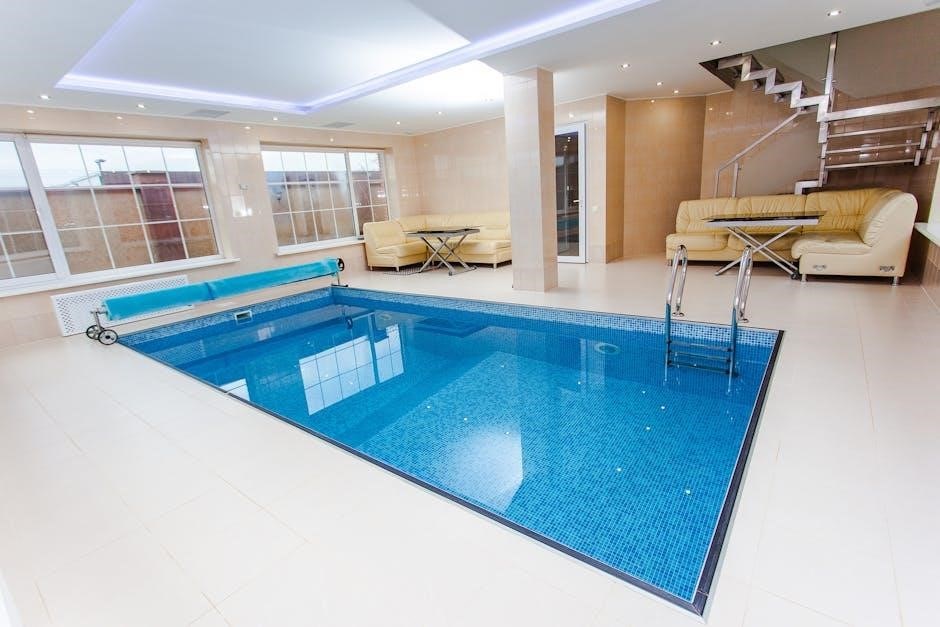
Hydrotherapy Exercises for Knee Replacement: A Comprehensive Guide
Hydrotherapy offers a unique and beneficial approach to rehabilitation following knee replacement surgery. This guide will provide a comprehensive overview of hydrotherapy exercises, their benefits, and how they can aid in your recovery process. Hydrotherapy uses water’s properties to promote healing.
Hydrotherapy, also known as aquatic therapy, involves performing exercises in a warm water pool. This approach is particularly beneficial after total knee replacement (TKR) surgery. The buoyancy of water reduces weight-bearing stress on the knee joint, allowing for a greater range of motion with less pain. The warmth of the water helps to relax muscles, further easing discomfort and promoting flexibility.
Hydrotherapy can commence relatively early in the rehabilitation process, often sooner than traditional land-based exercises. It provides a safe and supportive environment for regaining strength and mobility. A physical therapist experienced in aquatic therapy will guide you through specific exercises tailored to your individual needs and progress.
These exercises may include walking, gentle stretching, and strengthening activities. Hydrotherapy aims to improve joint mobility, reduce pain, and enhance overall function, facilitating a smoother and more comfortable recovery after knee replacement. It is essential to consult with your surgeon and physical therapist to determine if hydrotherapy is appropriate for you.
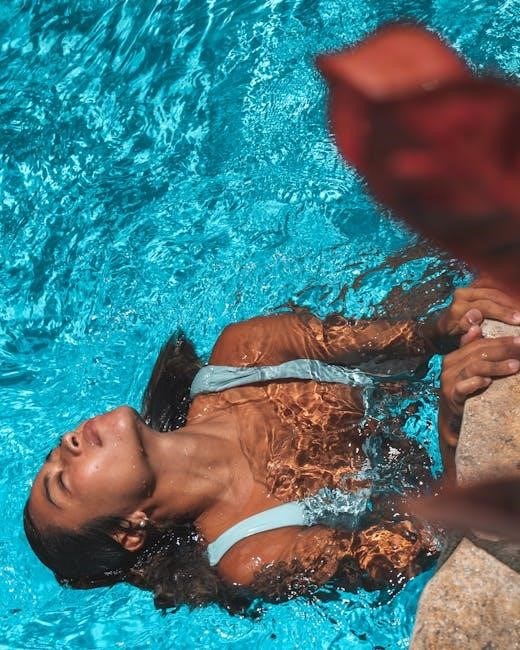
Benefits of Hydrotherapy for Post-Knee Replacement
Hydrotherapy offers numerous advantages following knee replacement surgery. The buoyancy of water reduces stress on the joint, while warmth promotes relaxation and flexibility. These benefits contribute to pain reduction, improved range of motion, and enhanced muscle strength during rehabilitation.
Pain Reduction and Muscle Relaxation
One of the primary benefits of hydrotherapy following knee replacement is its ability to significantly reduce pain and promote muscle relaxation; The warm water helps to soothe sore muscles and decrease joint stiffness, creating an environment conducive to healing and rehabilitation. The warmth of the water increases blood flow to the muscles surrounding the knee, promoting tissue repair and reducing inflammation.
The buoyancy of the water minimizes the impact of gravity, reducing the weight-bearing stress on the knee joint. This allows for a greater range of motion and more comfortable movement during exercises. The reduced stress on the joint can lead to a decrease in pain perception, making it easier to perform necessary exercises and rebuild strength.
Furthermore, the water’s gentle resistance can help to improve muscle strength without putting excessive strain on the recovering knee. The relaxing effect of the warm water can also alleviate muscle spasms and tension, further contributing to pain relief and overall comfort during the rehabilitation process.
Improved Range of Motion
Hydrotherapy plays a crucial role in improving range of motion after knee replacement surgery. The buoyancy of the water supports the body weight, reducing the stress on the knee joint and allowing for a greater freedom of movement. This reduced weight-bearing environment enables individuals to perform exercises that might be too painful or difficult on land, leading to quicker gains in flexibility.
The warmth of the water further enhances this process by relaxing the muscles and increasing blood flow to the joint. Warm water reduces stiffness, making it easier to stretch and move the knee through its full range of motion. The water’s resistance provides gentle support, allowing for controlled and safe movements that help to gradually increase flexibility.
Exercises such as gentle knee bends, leg swings, and water walking become more manageable and effective in the aquatic environment. This helps to break down scar tissue and prevent stiffness, both of which can limit range of motion. Regular hydrotherapy sessions can significantly contribute to regaining full knee functionality and improving overall mobility post-surgery.
Reduced Weight-Bearing Stress
One of the most significant advantages of hydrotherapy after knee replacement is the reduced weight-bearing stress on the joint. The buoyancy of water counteracts gravity, effectively decreasing the amount of weight placed on the knee. This allows individuals to perform exercises with less pain and discomfort, facilitating a more comfortable and effective rehabilitation process.
In the aquatic environment, the knee experiences significantly less impact compared to land-based activities. This is particularly beneficial in the early stages of recovery when the joint is still healing and sensitive. The reduced stress minimizes the risk of re-injury and allows for a gradual and controlled progression of exercises.
The buoyancy support allows for improved balance and stability, further reducing the risk of falls or stumbles. This added security can help patients feel more confident and motivated to engage in exercises that would otherwise be too challenging. Water-based exercises promote muscle strengthening and improved range of motion without the excessive strain that can hinder recovery on land. Hydrotherapy provides a safe and effective environment for rebuilding strength and function after knee replacement surgery.
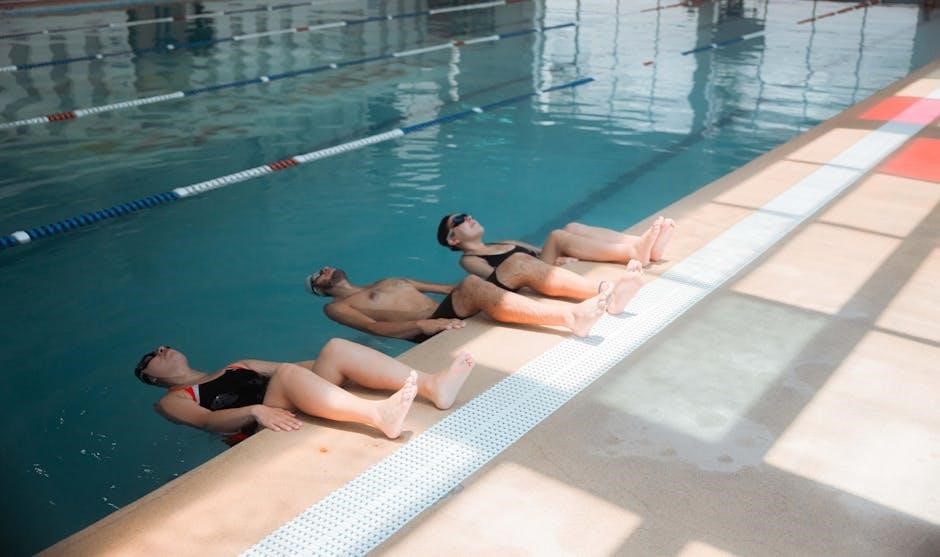
Precautions and Contraindications
While hydrotherapy offers numerous benefits after knee replacement, it’s crucial to be aware of certain precautions and contraindications. Individuals with open wounds or infections should avoid hydrotherapy until these conditions are resolved to prevent the risk of further complications. Similarly, those with uncontrolled bowel or bladder incontinence may not be suitable candidates for hydrotherapy due to hygiene concerns.
Cardiovascular instability, such as uncontrolled hypertension or severe heart conditions, requires careful consideration. The hydrostatic pressure of water can impact blood circulation and heart rate, potentially posing risks for individuals with these conditions. Respiratory issues, such as severe asthma or chronic obstructive pulmonary disease (COPD), should also be evaluated, as the humid environment of a hydrotherapy pool may exacerbate breathing difficulties.
Individuals with certain neurological conditions, like uncontrolled epilepsy, should exercise caution due to the potential risk of seizures in the water. Before starting hydrotherapy, a thorough medical evaluation by a healthcare professional is essential to identify any potential risks and ensure that hydrotherapy is a safe and appropriate rehabilitation option.
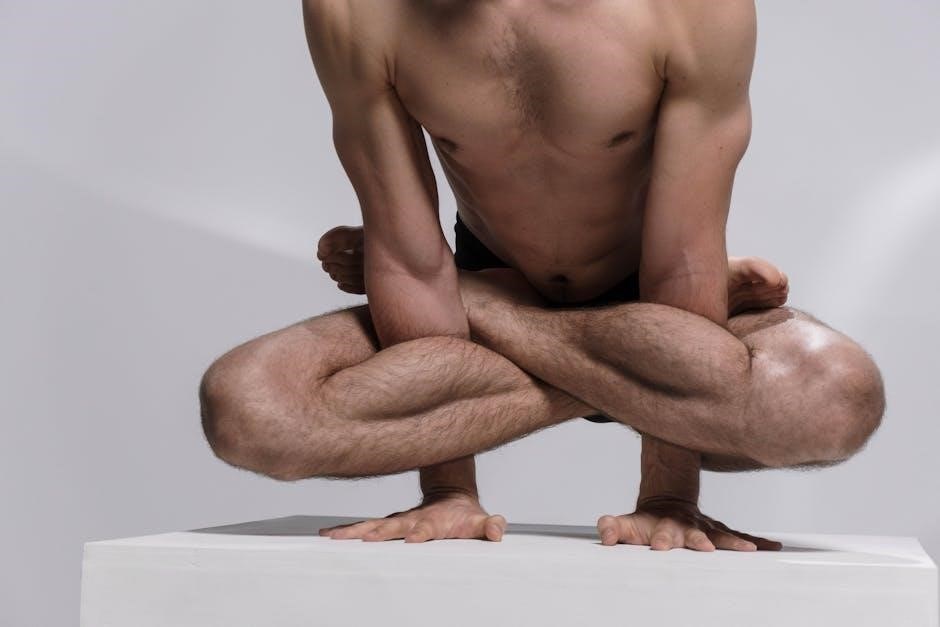
Hydrotherapy Exercises: A Step-by-Step Guide
This section outlines a step-by-step guide to hydrotherapy exercises suitable for post-knee replacement rehabilitation. Each exercise will be detailed with clear instructions, focusing on proper form and technique to maximize benefits and minimize risks. Start slowly and listen to your body.
Warm-Up Exercises in Water
Before starting any hydrotherapy program after knee replacement, a proper warm-up is crucial to prepare the muscles and joints for exercise. The warm-up should gradually increase blood flow, improve flexibility, and reduce the risk of injury. These gentle movements should be performed in chest-deep water to utilize buoyancy and reduce weight-bearing stress on the knee.
Start with walking in the water, both forward and backward, for 5-10 minutes. This helps to activate the leg muscles and improve circulation. Next, perform knee bends, gently bending and straightening the knees, ensuring the movement is pain-free and controlled. Follow this with ankle pumps, flexing and extending the feet to improve ankle mobility and calf muscle activation.
Another effective warm-up exercise is hip circles, rotating the hips in a circular motion to loosen the surrounding muscles. Additionally, incorporate arm circles to further enhance circulation and prepare the upper body for any potential weight-bearing activities. Remember to maintain a comfortable pace and focus on controlled movements during the entire warm-up routine. These exercises ensure your body is ready.
Strengthening Exercises
After a thorough warm-up, strengthening exercises in hydrotherapy are essential for rebuilding muscle strength around the knee joint following replacement surgery. The buoyancy of water reduces the impact on the joint, allowing for a more comfortable and effective workout.
One effective exercise is water walking with resistance. This can be done by using foam dumbbells or specialized aquatic resistance equipment. Focus on maintaining good posture and controlled movements. Leg extensions can be performed by slowly straightening the knee against the water’s resistance, targeting the quadriceps muscles. Hamstring curls can be done by bringing the heel towards the buttocks, working the muscles at the back of the thigh.
Hip abductions, moving the leg away from the midline of the body, strengthen the outer hip muscles, while hip adductions, bringing the leg back towards the midline, target the inner thigh muscles. Perform each exercise with a focus on proper form and gradually increase the repetitions and resistance as strength improves. Remember to listen to your body and avoid any movements that cause sharp pain. Hydrotherapy offers various options for strengthening the muscles.
Flexibility and Range of Motion Exercises
Flexibility and range of motion exercises are crucial components of hydrotherapy following knee replacement. The warm water helps to relax muscles and increase joint mobility, making these exercises more comfortable and effective. These exercises aim to restore the full range of motion in the knee and improve overall flexibility.
Knee flexion and extension exercises involve gently bending and straightening the knee, working towards achieving the maximum possible range. Ankle pumps, moving the foot up and down, improve circulation and reduce swelling. Heel slides, sliding the heel along the pool floor towards the buttocks, gently increase knee flexion. Leg swings, swinging the leg forward and backward, improve hip and knee mobility.
Water-assisted stretching involves using the buoyancy of the water to support the leg while performing gentle stretches, such as hamstring stretches or calf stretches. Focus on slow, controlled movements and avoid pushing beyond a comfortable range. Regular performance of these exercises will help to regain flexibility, reduce stiffness, and improve the overall function of the replaced knee. Remember to consult with a physical therapist.
Sample Hydrotherapy Program
This sample hydrotherapy program provides a general outline and should be adjusted based on individual needs and guidance from a physical therapist. The program typically starts with a warm-up phase, followed by strengthening and range of motion exercises, and concludes with a cool-down.
A typical session might begin with 5-10 minutes of warm-up, including gentle walking or marching in the water. Strengthening exercises could involve leg raises, knee extensions, and hip abduction, performed for 10-15 repetitions each. Range of motion exercises might include knee flexion and extension, ankle pumps, and heel slides, repeated 10-15 times. The cool-down phase could involve gentle stretching and relaxation in the water.
Frequency and duration will vary, but a common approach is 2-3 sessions per week, lasting 30-45 minutes each. It’s crucial to monitor pain levels and adjust the program accordingly. This program is a starting point and should be tailored to your specific needs and progress under the supervision of a qualified professional.
Progression and Monitoring
Effective progression in hydrotherapy is crucial for optimal recovery after knee replacement. It involves gradually increasing the intensity, duration, or complexity of exercises as your strength and range of motion improve. This should always be guided by your physical therapist to prevent overexertion or injury.
Monitoring your body’s response to the exercises is equally important. Pay attention to any pain, swelling, or discomfort you experience during or after the session. These symptoms can indicate that you’re pushing too hard or performing exercises incorrectly. Keep a journal to track your progress, noting any changes in pain levels, mobility, and overall well-being.
Regular communication with your physical therapist is essential for making appropriate adjustments to your hydrotherapy program. They can assess your progress, modify exercises, and provide valuable feedback to ensure you’re on the right track. The goal is to achieve a steady, safe, and effective recovery.
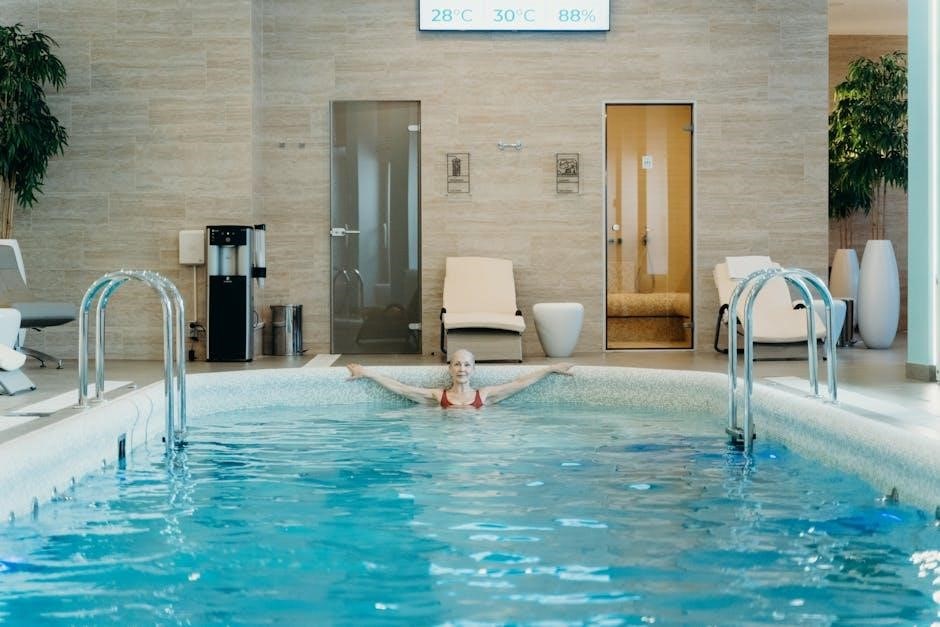
The Role of a Physical Therapist
A physical therapist plays a vital role in your hydrotherapy program after knee replacement surgery. They are experts in designing and implementing customized exercise plans that cater to your specific needs and recovery goals. Their expertise ensures that the exercises are performed correctly and safely.
Assessment and Guidance: A physical therapist conducts a thorough assessment of your physical condition, including range of motion, strength, and pain levels. Based on this assessment, they develop a hydrotherapy program tailored to your individual needs.
Exercise Supervision: They provide hands-on guidance during hydrotherapy sessions, ensuring that you perform exercises with proper form and technique. This minimizes the risk of injury and maximizes the benefits of the therapy.
Progression and Monitoring: The physical therapist monitors your progress closely, adjusting the intensity and complexity of exercises as you improve. They also provide valuable feedback and support throughout your recovery journey.
Hydrotherapy presents a valuable and effective approach to rehabilitation following knee replacement surgery. By harnessing the unique properties of water, it offers a low-impact environment that promotes pain reduction, muscle relaxation, and improved range of motion. Through consistent and guided hydrotherapy sessions, individuals can experience significant improvements in their recovery journey.
Remember, consulting with a physical therapist is crucial to ensure a safe and effective hydrotherapy program tailored to your individual needs. They will assess your condition, design a customized plan, and provide ongoing supervision and guidance.
With dedication and the support of healthcare professionals, hydrotherapy can be a powerful tool in regaining strength, mobility, and overall quality of life after knee replacement. Embrace the benefits of water-based exercises and embark on a path towards a more active and fulfilling future.
No related posts.
Struggling with knee pain after replacement? Discover gentle hydrotherapy exercises! Download our FREE PDF guide and get moving again in Australia!
Posted in Australia